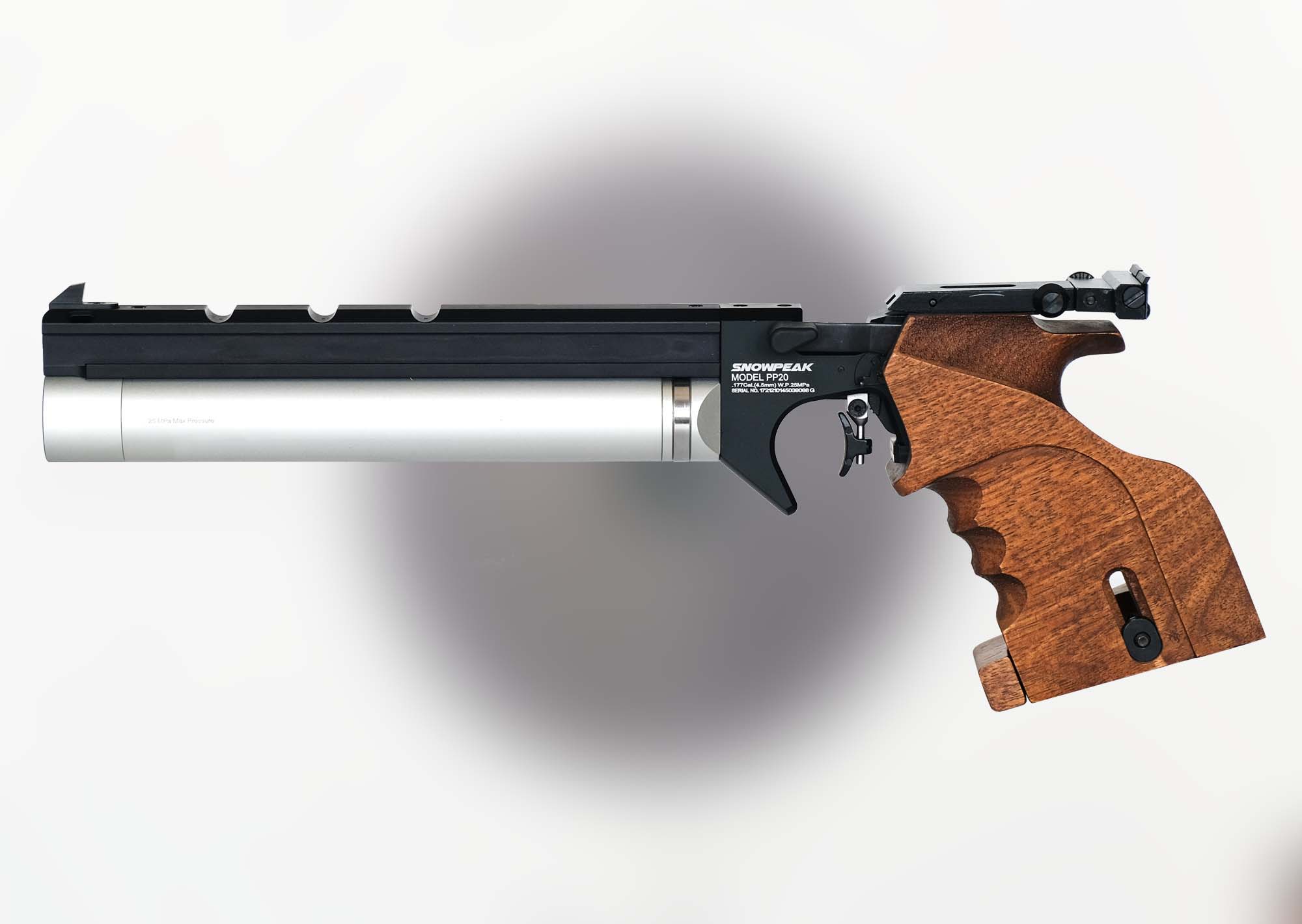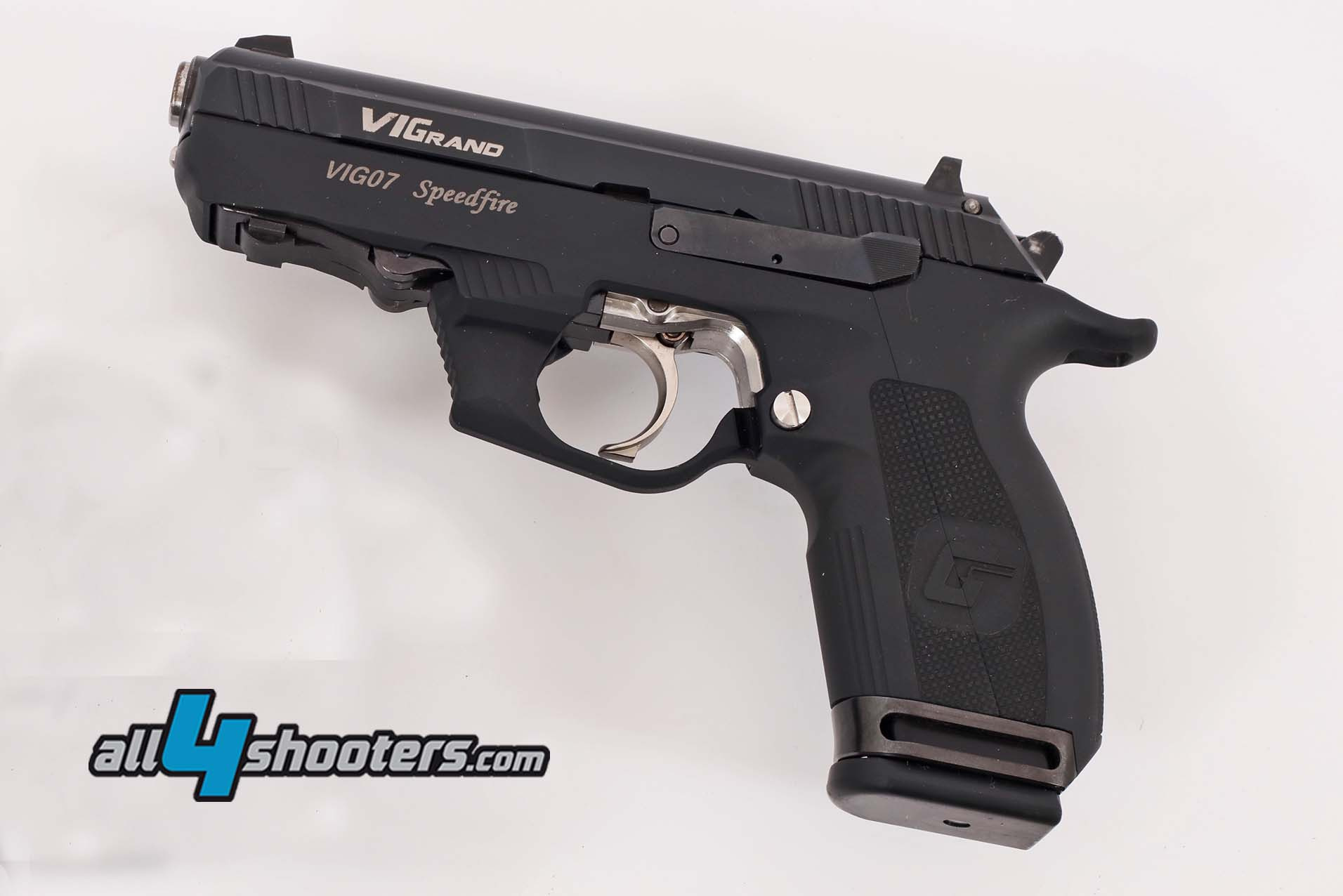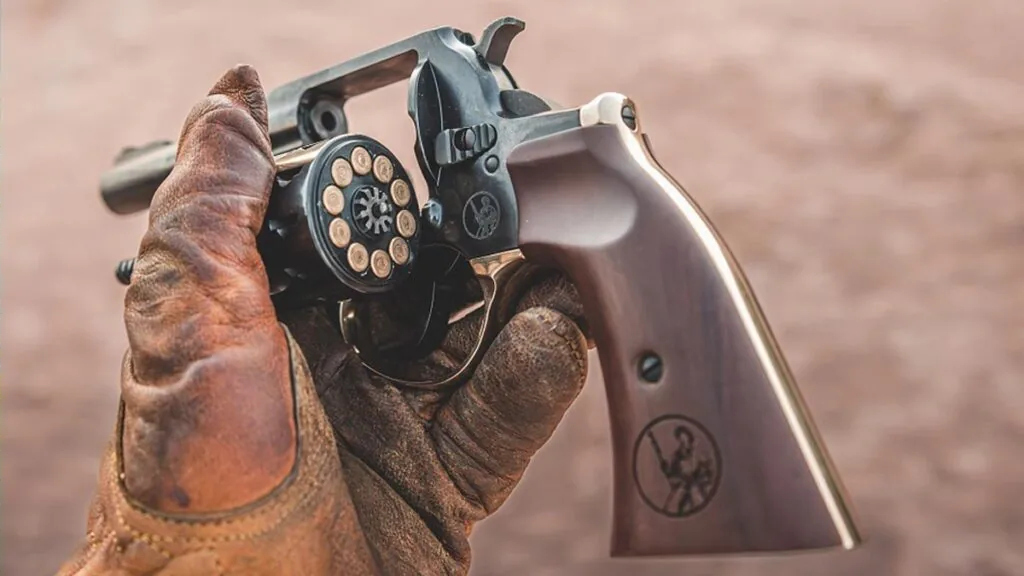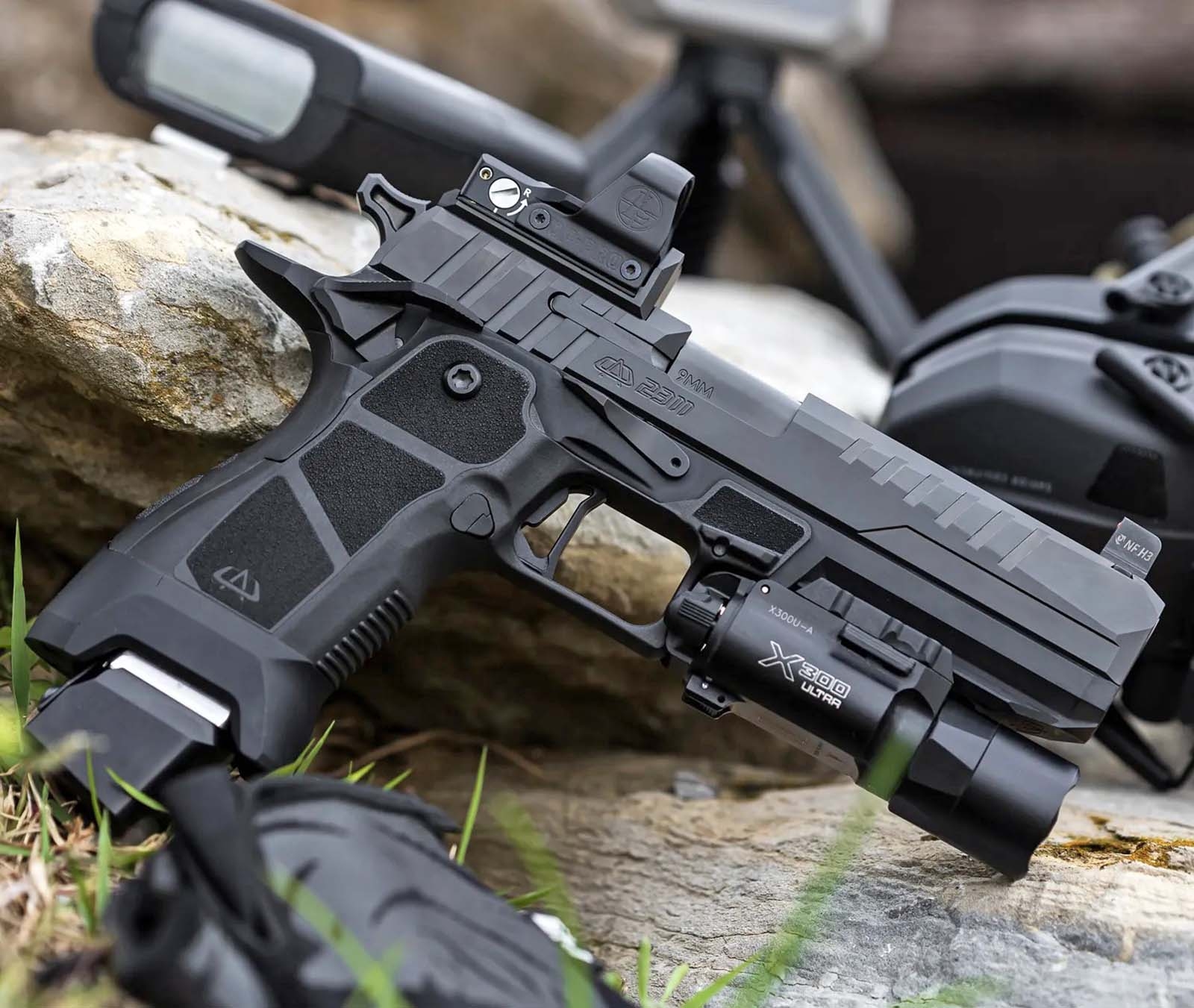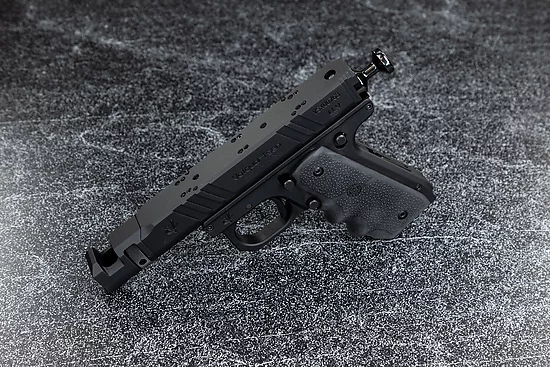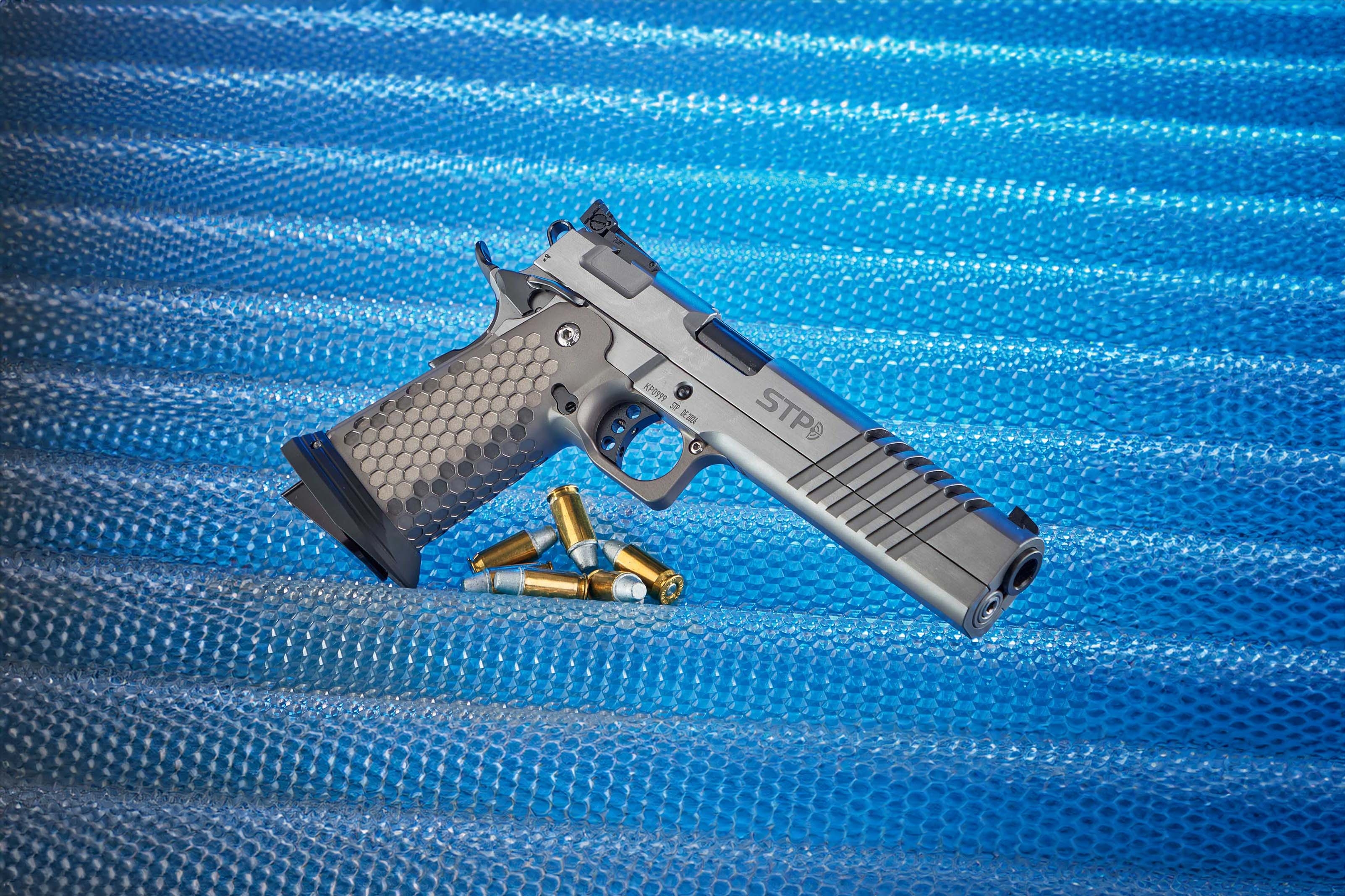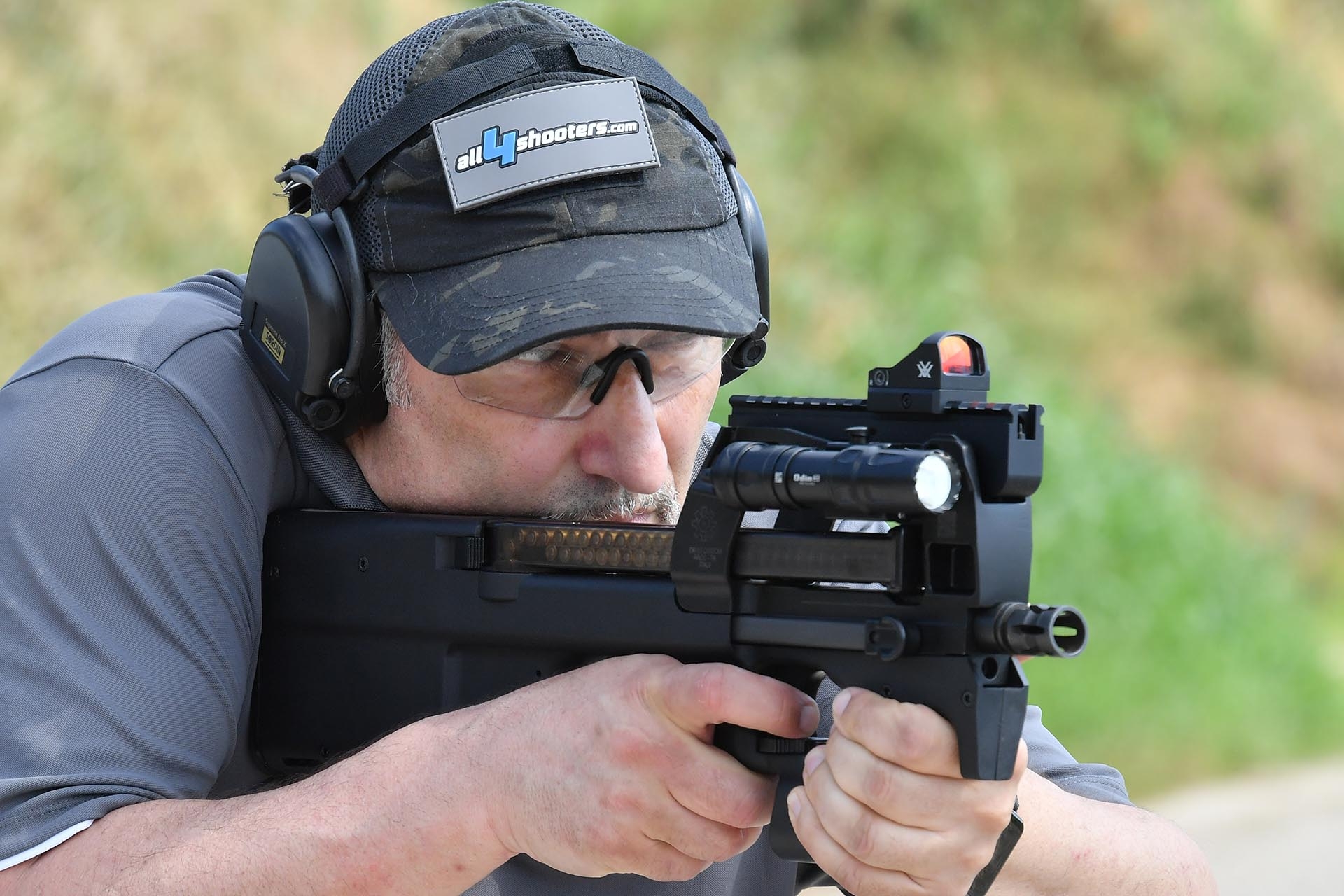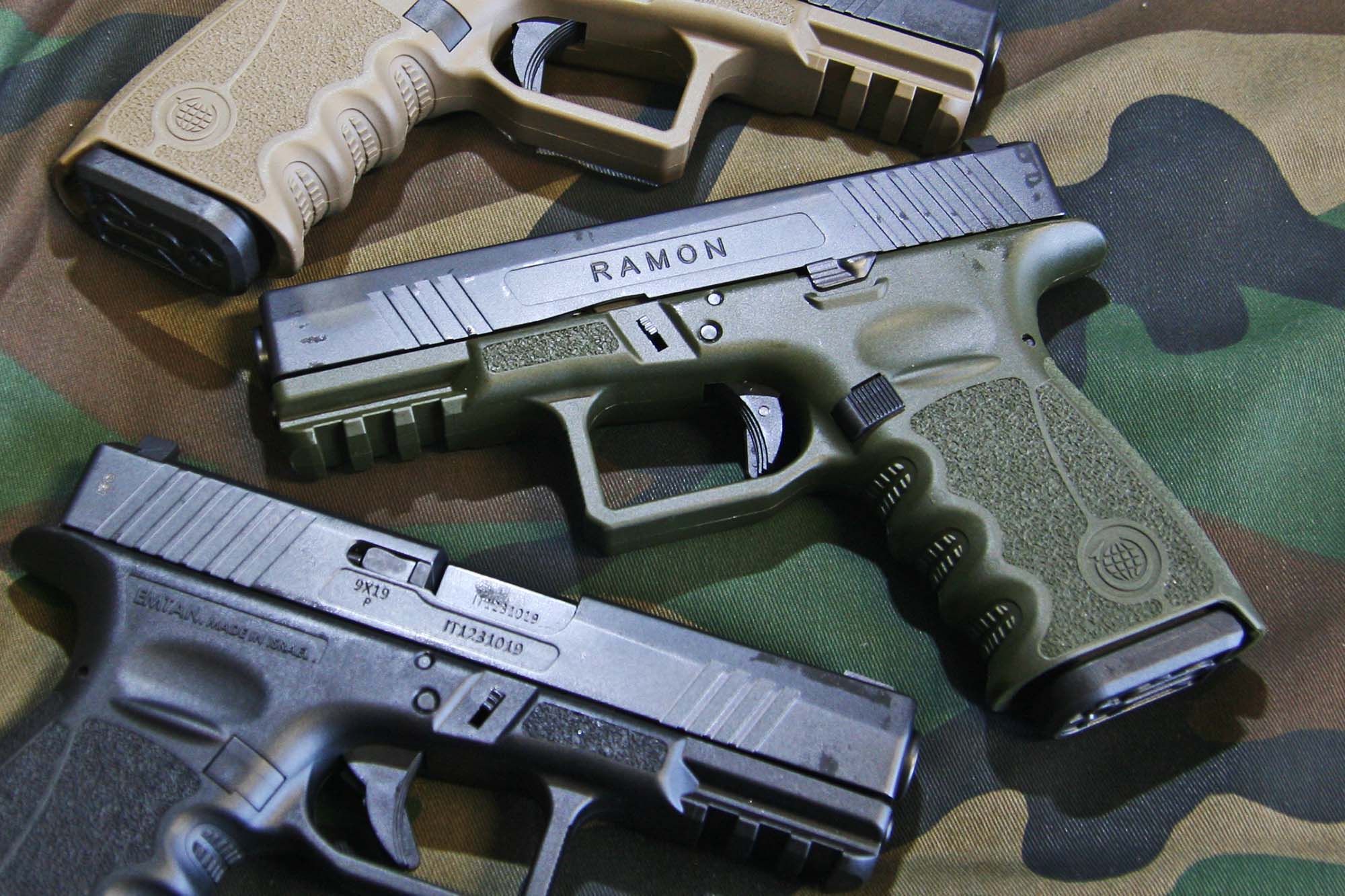“Hellcat” is the name given to the small pocket gun from Croatia by Springfield Armory – and the Hellcat won several awards from the press and industry in the USA last year. Now the powerful little gun with a spacious magazine is also available in our part of the world, although the manufacturer HS Produkt refers to it simply as the H11. As usual, the polymer-framed pistols from Springfield Armory and HS Produkt differ from each other only in the labeling: they are all manufactured in Karlovac, Croatia.
The technology of the HS Produkt H11
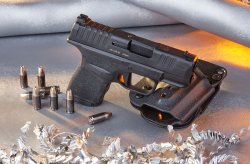
The concept is based on tried-and-tested basic designs: above the polymer grip frame, there is an improved Browning system that locks in the ejection port and double recoil springs encapsulated on the guide rod. The trigger with the safety integrated into the trigger blade provides a consistent, mid-length travel from first to last shot. The trigger pull weight on the test specimens was around 2350 grams: After a few millimeters of slack, the trigger finger encounters resistance in the form of a relatively clearly defined point of resistance. This resistance has to be overcome over a travel of about three millimeters with consistent characteristics until the shot breaks. After the shot, you don't have to let the trigger travel all the way back, but the overtravel of around six millimeters is not overly short.
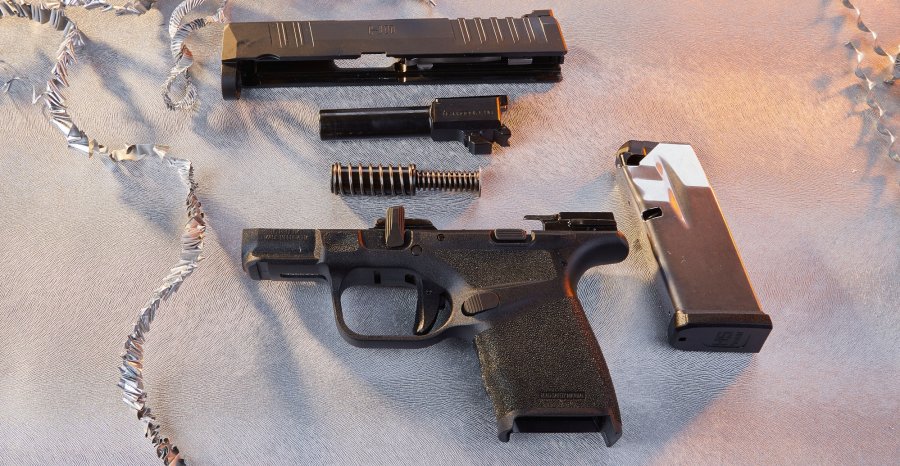
H11 from HS Produkt: features and workmanship
Here, HS Produkt does not differ from other better known European manufacturers. On the outside, as on the inside of the pistols, the surfaces presented themselves carefully finished, neatly marked and without annoying seams on the plastic grips. An undue amount of light flashed through between the underside of the front sight and the top of the slide. Otherwise, the test log noted no failures in the area of workmanship and finish: slide play on the frame's guide rails was in line with good average for a polymer gun. When locked, the barrel only yielded slightly to the testing thumb at the side in the area of the cartridge chamber, and the barrel sat tightly in the ejection port at the front. All in all, well-crafted polymer pistols, without any noticeable outliers.
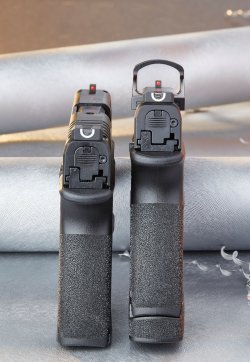
For the surface texture of the grip area, HS Produkt opted for a uniform roughening of the front, sides and back of the grip. The pattern is reminiscent of a very fine stippling, and for a mini-pistol carried in a pocket holster or very close to the body, it offers a good compromise between good accessibility when drawing and a non-slip grip when firing. Subjectively, the H11 felt flawless: as a twelve-shooter, the little finger finds its place comfortably under the magazine base for glove sizes 9 to 9 ½, and with the 15-mm longer 13-round magazine the little finger just fits on the longer magazine base. The magazine release can be repositioned for left-handers, and the slide catch lever is found only on the left side of the fiberglass-reinforced polymer frame, as is customary for ultra-compact pistols. The gun can be easily disassembled via the break-down lever above the trigger guard. However, this requires pressure on the trigger to decock the H11, otherwise the slide cannot be pulled off the frame. A groove at the top of the chamber provides information about the loading status. Additional cocking serrations in the front of the slide are also part of the equipment, as is a (very short) Picatinny interface in front of the trigger guard. HS Produkt protects the steel of the barrel and slide from scratches and rust with a matte black nitriding. The sights follow current trends: the rear sight and front sight are made of steel and can be moved by tapping them. The overall height of the sights is just enough to still create a "co-witness" in conjunction with the Shield reflex sight mounted here: rear sight notch and fiber optic front sight remain visible even when looking through the lens of the Shield Sight mounted here, an indispensable feature for a defensive pistol if you want to use a Red Dot. The fine quality and the cleverly designed overall package then also have their price. At around 850 euros complete with cover plate and three magazines, but without reflex sight, the RDR variant of the H11 is one of the rather high-priced polymer carry pistols. For a made in England Shield RMSc red dot sight, you would have to add another 350 euros.
HS Produkt H11: specs and prices at a glance
| Model: | HS Produkt H11 | HS Produkt HS RDR |
| Prices
(may be different in your country): | 798 euro | 849 euro |
| Caliber: | 9 mm
Luger | 9 mm Luger |
| Magazine
Capacity: | 11/13 + 1 rounds | 11/13 + 1 rounds |
| Dimensions
(LxWxH): | 6.02x1.06x4.21 in (153x27x107
mm) | 6.02x1.06x4.80 in (153x27x122
mm) |
| Barrel
Length: | 3.15"/80 mm | 3.15"/80 mm |
| Sight
Radius: | 4.96"/126 mm | 4.96"/126 mm |
| Rear
Sight Notch: | 0.145"/3.7 mm | 0.145"/3.7 mm |
| Front
Sight Width: | 0.141"/3.6 mm | 0.141"/3.6 mm |
| Trigger
Pull Weight: | 84.65 oz/2400 g | 81.13 oz/2300 g |
| Weight: | 18,59 oz/527 g | 18.41 oz/522 g |
| Features: | Melonite
finish, steel sights, three stainless steel magazines, trigger safety. | Same as base model H11, slide ready for reflex sights. Price with Shield sight: 1199 euro. |
With the subcompact H11 pistol on the shooting range
To cut a long story short – the H11 left an excellent impression in terms of handling and accuracy on balance. Particularly in conjunction with the Shield reflex sight, shooting was simply a huge pleasure. But first things first, with so much praise in advance, let's take a look at the short list of criticisms. Such as: when tightly gripped, the magazine base of the small eleven-round magazine presses into the palm of the hand at the rear – not painful, but still a touch uncomfortable. The fancy cocking serrations would have to be milled a touch deeper or be a bit sharper, especially since they don't offer an excessive amount of surface area for handling in this small gun. As is usual for ultra-compact 9 Paras with a correspondingly low slide mass, the recoil springs of the H11 are very tight, so you can slip off the serrations when loading with wet hands.
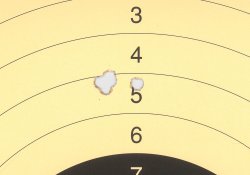
When shot over the rear sight and front sight, the RMR variant delivered a relatively large amount of high shots with all tested loadings, averaging a good four fingers wide at 25 meters. But with the RMR, the rear sight and front sight only serve as a stopgap in case the red dot sight should ever fail, and the high shots can be corrected with three or four file strokes. There was nothing more to complain about – on the contrary, the H11 performed excellently in live fire, even up to 25 meters in conjunction with the Shield sight. It has to be said that the advantages of the H11 and Shield combo for fast, accurate shots only come into play at distances over 10 meters. For the fist distance, the conventional sights with U-shaped rear sight and the front sight with red fiber optic rod will definitely do.
As for accuracy, the pistol was first tested using a Heymann guntester using the rear sight and front sight at a distance of 15 meters. On average, the five-shot groups were about eight or nine centimeters in diameter. Four shots were often within four to six centimeters of each other - the pistol's sight radius is rather short, and it's easy for a sighting error to creep in. In conjunction with the Shield reflex sight, the test gun showed its potential for tight groupings. At the 15-meter range, the largest group of the ammunition types used measured 48 (30) millimeters. It worked particularly well with the partial jacket hollow point cartridge from Prvi Partizan: here five shots were together at 23 mm. After deducting the group's flyer, it would have been only eight millimeters: a pleasantly accurate carry pistol, despite the safety trigger and 80-mm short stubby barrel. Of course, this also has an effect on performance. Tests loadings without +P ammunition produced about 350 joules from the H11. In terms of function, the gun didn't have a single lapse, not even when it was deliberately held weakly in the three-finger grip.
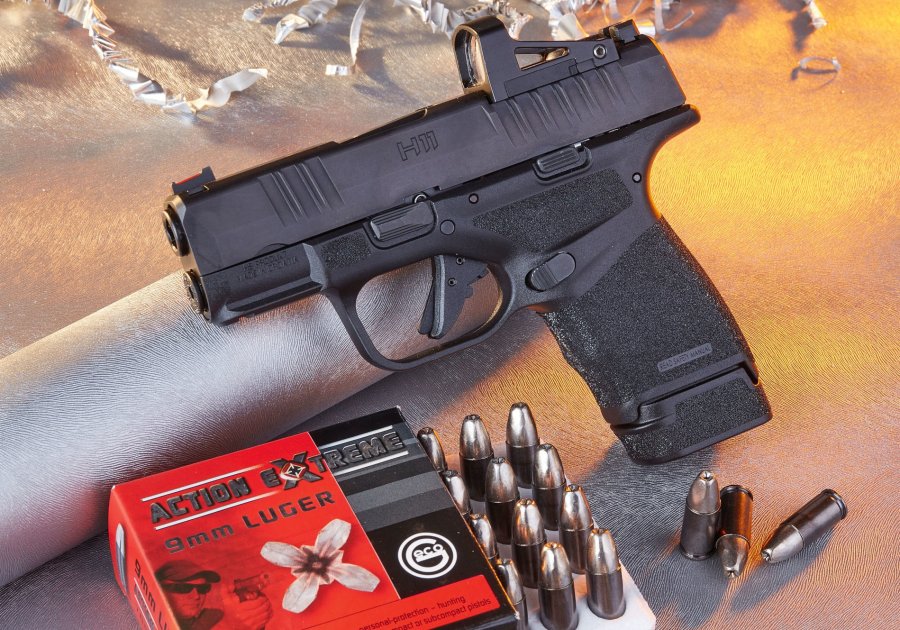
Regardless of whether it was held one-handed or two-handed and regardless of how strongly it was held, the case ejection was positive and always even to the right with all test loads, with the brass being thrown a good two and a half to three meters. The little 9 Para doesn't have to hide when it comes to shooting behavior either. The trigger and grip design allow for quick, precise firing strings in relation to the low weight. The H11 naturally jumps more powerfully in the hand than a larger and heavier polymer pistol, but recoil was never felt to be unpleasant, quite in contrast to comparably heavy pocket revolvers with similarly powerful ammunition. There was also nothing to complain about in terms of operability in the field. The H11 does not have many levers, and both the (reversible) magazine release and the slide catch lever did their job without any problems and were ergonomically easy to operate. The only downer was that at the beginning of the range visit in slightly sub-zero temperatures, the last cartridge in each case could just be squeezed into the magazines by hand without a loading aid. Towards the end of the test, however, there was nothing more that could be done with numb fingers, and then we had to stick with ten or twelve cartridges, depending on the magazine variant.
Test conclusion
Reliable, very small and handy, yet highly accurate and blessed with a fantastic magazine capacity relative to its size: the H11 cuts a fine figure when showing and firing. Thus, even at a price point starting at 800 euros, performance and cost are in good proportion to each other. HS Produkt has a winner on its hands with the H11.
For more information on the HS Produkt firearms please visit the manufacturer's website.



